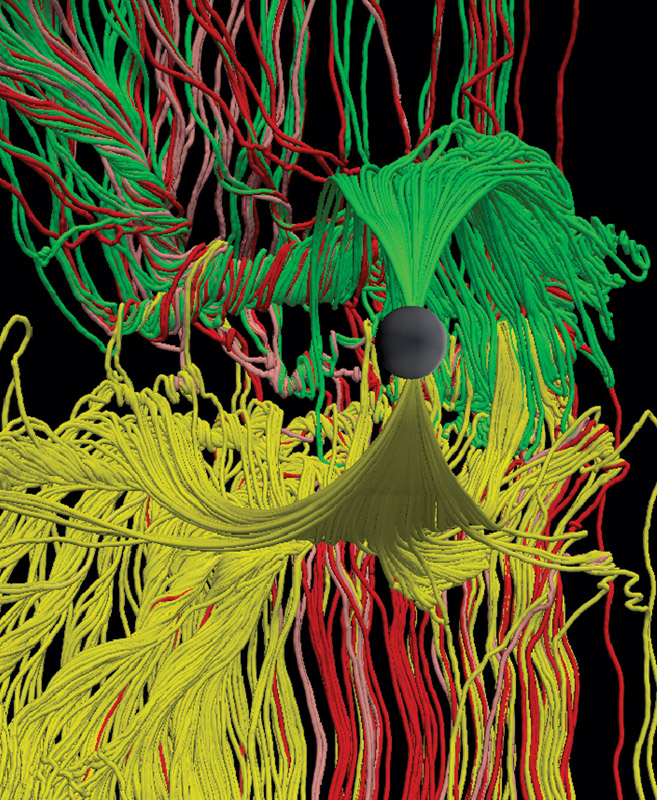Magnetic reconnection in 3D
DOI: 10.1063/PT.3.1486
Earth’s intrinsic magnetic field deflects the solar wind—and the interplanetary magnetic field it carries—and protects us from the wind’s plasma of ions and electrons. But magnetic reconnection, in which oppositely directed field lines in the two fields break and reconfigure, can rupture that shield. Such explosively energetic events can accelerate particles to relativistic speeds and produce geomagnetic storms capable not only of generating spectacular aurorae but also of damaging satellites, disrupting communication networks, and overloading electric grids. (See the article by Forrest Mozer and Philip Pritchett in PHYSICS TODAY, June 2010, page 34
Shown here is a visualization from a recent 3D global hybrid simulation by Homa Karimabadi (University of California, San Diego) and his team. Exploiting the petascale speed of today’s supercomputers, such reconnection simulations can track the motion of more than a trillion ions; the electrons are modeled as a fluid. The 3D simulations reveal behavior not possible in 2D—in particular, the dominant role of helical magnetic structures known as flux ropes. With their customized visualization techniques, the researchers could color-code the field lines from the solar wind (here, red) and different parts of Earth’s dipole field (green, yellow, pink) to better study the complex entanglement and mixing that ensue. (Image by Homa Karimabadi and Burlen Loring. See also H. Karimabadi et al., Astron. Soc. Pac. Conf. Ser.444, 281, 2011.)
To submit candidate images for Back Scatter, visit http://contact.physicstoday.org

Image by Homa Karimabadi and Burlen Loring





